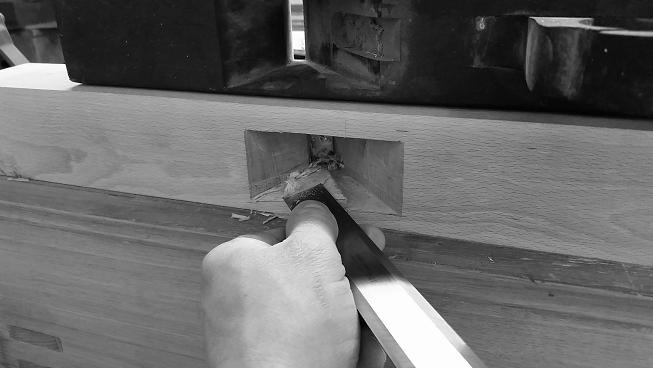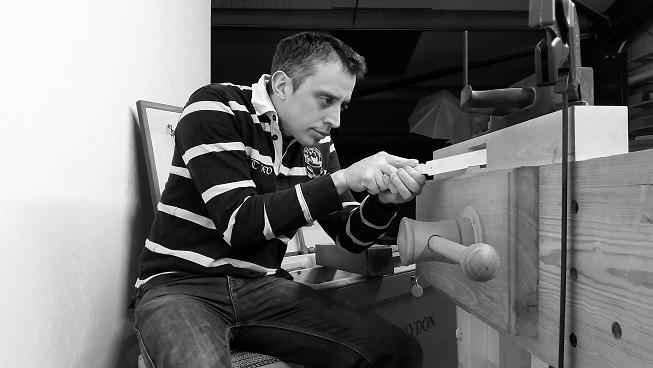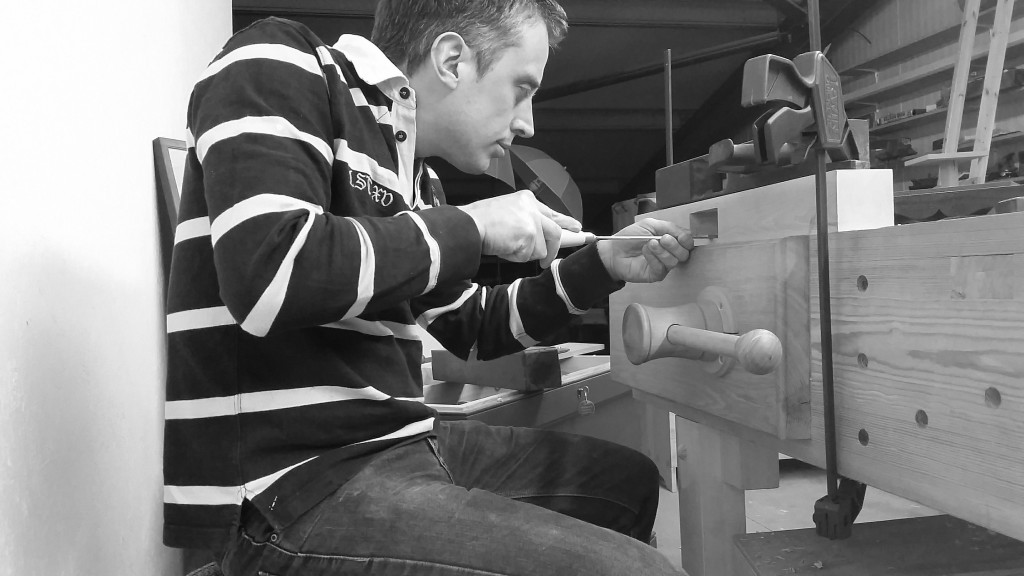We may receive a commission when you use our affiliate links. However, this does not impact our recommendations.
Whatever step I take next in this process of making a jack plane (see part 1 here), I like to have my muse close by and through looking at then trying to replicate, I gain more respect for the tool making art. From a distance the simple rectilinear form of jack, try and jointer planes do little to suggest the nuances and evolution present within them. It is only when I try to replicate what at first seems simple do I appreciate more fully how crisp the detailing is on the original and professionally made plane. I missed my float delivery at the weekend but look forward to collecting it from the depot tomorrow. In the meantime I’ve been working with a small Japanese-style pull saw and paring chisels to form the abutments and shape up the mouth/escapement.
I’ve sometimes read about concerns that clamping work to a bench with aprons is a non starter; thankfully clamping and workholding is the easy part of this project. Working with paring chisels is also pretty unfamiliar for me (all my work is typically accessible with a regular bench chisel). Their delicate nature, especially the 1/4″ and 1/2″, makes for a very sensitive tool. I’m far from an expert with them but by changing finger pressure on the blade you can make the 1/4″ really do what you want it to. I hope to have the mouth finished up by my next post and be moving onto the wedge and perhaps some interesting observations on grinding angles.
— Graham Haydon
Ed note: If you want to make your own wooden-bodied plane, you’ll find Bill Anderson’s instructional video “Building a Traditional 18th-century Jointer Plane” invaluable.
Here are some supplies and tools we find essential in our everyday work around the shop. We may receive a commission from sales referred by our links; however, we have carefully selected these products for their usefulness and quality.












“Working with paring chisels is also pretty unfamiliar for me (all my work is typically accessible with a regular bench chisel).”
How do you distinguish a paring chisel from a bench chisel? Are you simply talking about the length of the blade?
Nice work…. I do have one criticism. Stand up and use your whole body, arms, core and legs to work the chisel or whatever hand tool. If needs be, raise your work bench height. Right now you are using your arms and shoulders, neck and some belly. This leaves out some of the strongest muscles in your body and the kinetic strength that comes with learning, training the whole body to do process.
When doing fine adjustments on the mouth of a wooden plane, planemakers floats are far easier to use than a chisel.
Looking good. I would like to see some dimensions for what you are doing. How wide is the plane, how wide is the mouth, what are the angles you are using, or matching, etc. Thanks.